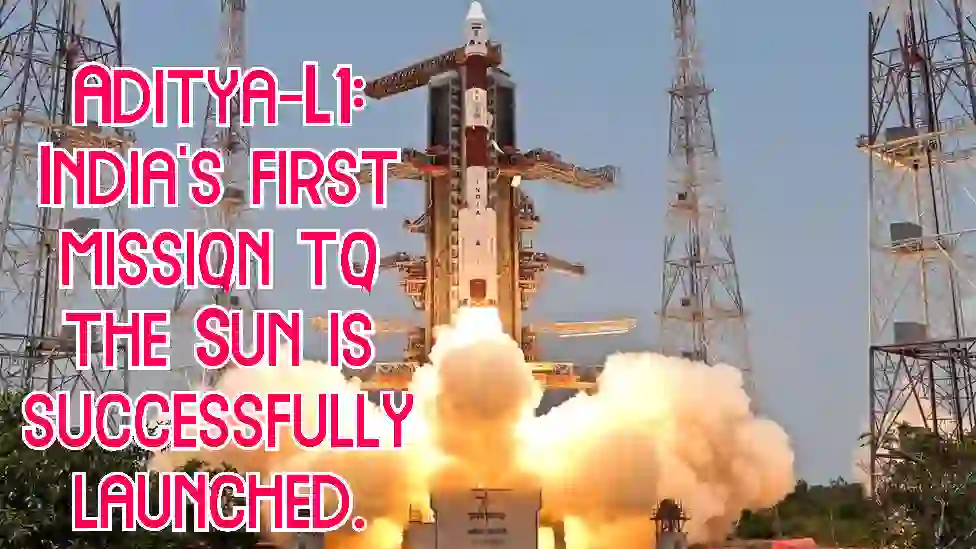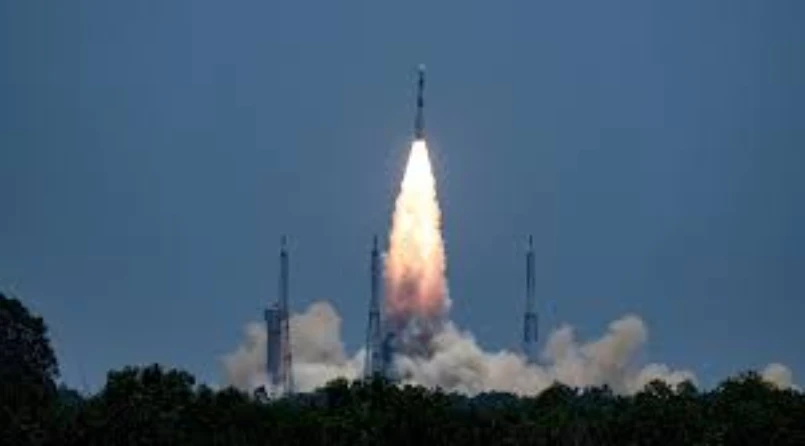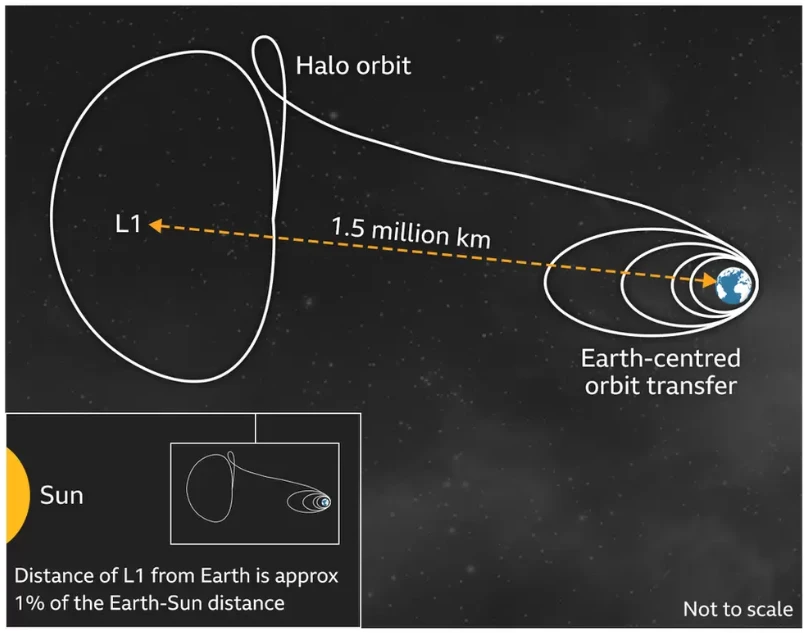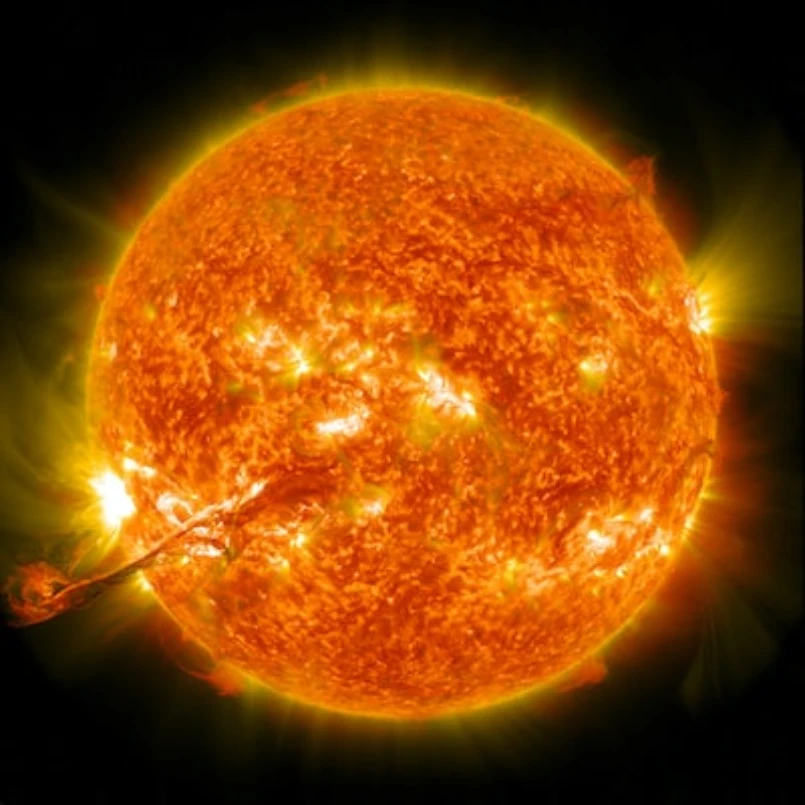
Just days after being the first nation to set foot close to the south pole of the Moon, India has launched its first observation mission to the Sun.
Aditya-L1 launched from the launch facility at Sriharikota
At 11:50 India time (06:20 GMT) on Saturday, Aditya-L1 launched from the launch facility at Sriharikota.
It will cover 1.5 million kilometers (932,000 miles) or 1% of the distance between the Earth and the Sun.
According to India’s space agency, the journey will take four months.
The name of India’s first space-based project to examine the largest object in the solar system comes from Surya, the Hindu sun god also known as Aditya.

L1 stands for Lagrange point 1, the precise location where the Indian spacecraft is traveling between the Sun and Earth.
A Lagrange point, according to the European Space Agency, is a location where the gravitational pull of two enormous objects, such as the Sun and the Earth, cancel each other out and allow a spacecraft to “hover.”
Aditya-L1 will be able to orbit the Sun at the same speed as the Earth once it reaches its “parking spot” This implies that the satellite will run on very little fuel.
Mission successful
A few thousand people gathered to watch the launch on Saturday morning at the viewing gallery set up by the Indian Space Research Agency (Isro) close to the launch site.
Additionally, it was live-broadcast on national television, where the pundits referred to it as a “magnificent” launch. The launch was successful, according to Isro experts, and its “performance is normal.”
Isro proclaimed it “mission successful” after one hour and four minutes of flying time.
Isro chief Sreedhara Panicker Somanath stated, “Now it will continue on its journey – it’s a very long journey of 135 days, let’s wish it [the] best of luck.”
As soon as Aditya-L1 reaches its goal, according to project head Nigar Shaji, it will help not only India but the entire scientific community.
“magnificent” launch videvo
Now, Aditya-L1 will circle the planet numerous times before being sent toward L1.
This vantage point will allow it to continuously observe the Sun and conduct research, even when the Sun is obscured by an eclipse.
Isro has not specified the cost of the mission, however estimates in the Indian press estimate it to be 3.78 billion rupees ($46 million; £36 million).

Orbiter is equipped
According to Isro, the orbiter is equipped with seven scientific tools to examine and analyze the solar corona, which is the sun’s outermost layer, the photosphere, which is the part of the sun that we can see from Earth, and the chromosphere, which is a thin layer of plasma between the photosphere and the corona.
The research will aid in the understanding of solar activity, including solar wind and solar flares, and their immediate impact on Earth and near-space weather.
According to Mylswamy Annadurai, a former scientist of Isro, the Sun constantly affects Earth’s weather through radiation, heat, the movement of particles, and magnetic fields. He claims that it also affects the space weather at the same time.
India has more than 50 satellites in orbit
India has more than 50 satellites in orbit, and they offer the nation a variety of vital services including communication channels, weather information, and assistance in forecasting pest infestations, droughts, and imminent disasters. Nearly 7,800 of the 10,290 satellites still in Earth’s orbit are active, according to the United Nations Office for Outer Space Affairs (UNOOSA).
Star that is essential to our survival
According to Mr. Annadurai, Aditya will aid in our understanding of the star that is essential to our survival and even provide us with a warning.
We can shift our satellites out of harm’s way if we are aware of the Sun’s activities, such as solar wind or an impending solar eruption, a few days in advance. This will prolong the life of our satellites in orbit.

The expedition, he continues, will primarily contribute to advancing our knowledge of the Sun, the 4.5 billion year old star that is the center of our solar system.
Just a few days prior to its solar mission, India had successfully landed the first probe in history close to the lunar south pole.
With that, India joined the United States, the former Soviet Union, and China as the only other nations to successfully complete a soft landing on the moon.
India will join the exclusive group of nations that are already researching the Sun if Aditya-L1 is a success.
Japan launched the first mission in 1981 to investigate solar flares, and since the 1990s, both the US space agency Nasa and the European Space Agency (ESA) have been keeping an eye on the Sun.
A Solar Orbiter that was jointly launched by NASA and ESA in February 2020 is studying the Sun up close and gathering data that, according to scientists, will help them understand what motivates its dynamic behavior.
And in 2021, the Parker Solar Probe, one of NASA’s newest spacecraft, made history by being the first to go through the corona, the Sun’s outer atmosphere.
You must also tell us your opinion about this article in the comment box. Also, if you liked this article, then share it and stay connected with your own website gobloging to read other similar articles.
Image Credit-Unsplsh
🔵🟣🟡⚫
